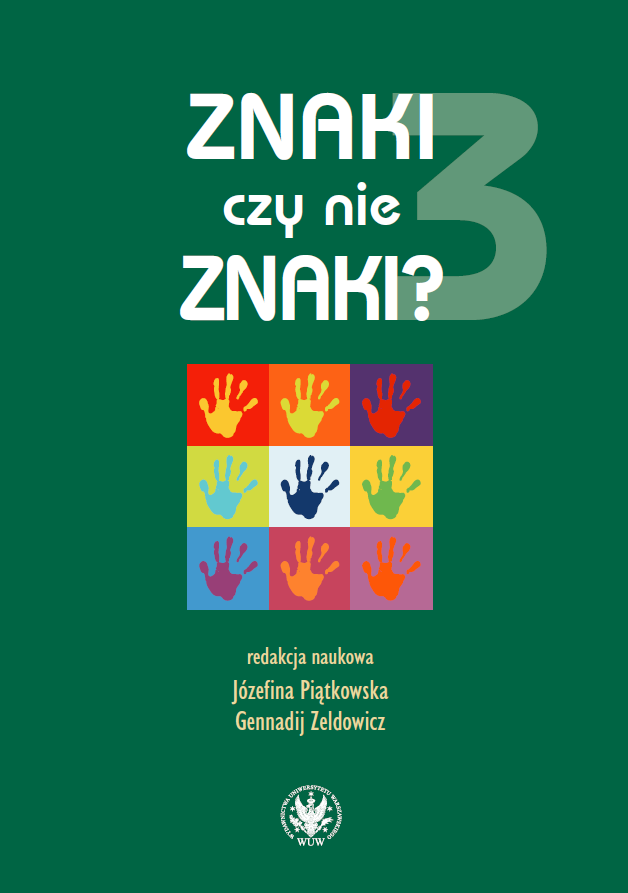Formy wiersza jako nośniki znaczeń
Forms of verse as bearers of meanings
Author(s): Teresa Dobrzyńska-Janusz
Subject(s): Semiotics / Semiology, Theoretical Linguistics, Applied Linguistics, Studies of Literature, Polish Literature, Other Language Literature, Philology
Published by: Wydawnictwa Uniwersytetu Warszawskiego
Keywords: verse; meaning; stylistic markedness; iconicity; axiology
Summary/Abstract: Investigation of verse forms and their functioning in literary texts leads to the conclusion that they may be employed as bearers of semantic values. The present paper is going to show the richness of this resource. The semantic values of various verse structures are interpreted here in terms of the semiotic categories introduced by Charles Sanders Peirce: as symptoms, symbols, or iconic signs. The basis for this kind of reflection is earlier research in Polish verse structure and a systematic study of various verse forms and their linguistic morphology conducted by a group of Polish and other Slavic researchers (the results of their collaborative work have been published in the “Comparative Slavic Metrics” series („Słowiańska Metryka Porównawcza”); a particular interest to the semantic function of verse forms is a hallmark of the volume (Semantyka form wierszowych (1988)). The semantic function of the rhythmical organization of an utterance may be found even in antiquity and can be noted in many cultures. Rhythmical utterances were treated there as standing in opposition to non-metrical everyday speech and as vehicles of such cultural values as “sacred”, “solemn”, “important for the community”. The semantic value of a metrical structure can be attributed to the fact that verse forms function as filters of various linguistic units and that the metrical organization of a text determines its stylistic characteristics. This stylistic value may be employed and interpreted in many different ways, for instance to represent the social status of the speaker or to differentiate between various literary genres. Many metrical forms perform an iconic function (which depends not only on the rhythmical organization of a text but also on its verbal and conceptual content). Some semantic values are derived from the intertextual relationships of a poem and result from the position of its verse form in the verse form system of a given literature. Verse structure may also be seen as a kind of author’s signature, and it may be employed to perform axiological functions. Many such cases have been illustrated in the paper.
Book: Znaki czy nie znaki? Tom 3. Struktura i semantyka utworów lirycznych
- Page Range: 127-152
- Page Count: 26
- Publication Year: 2020
- Language: English, Russian, Polish
- Content File-PDF

